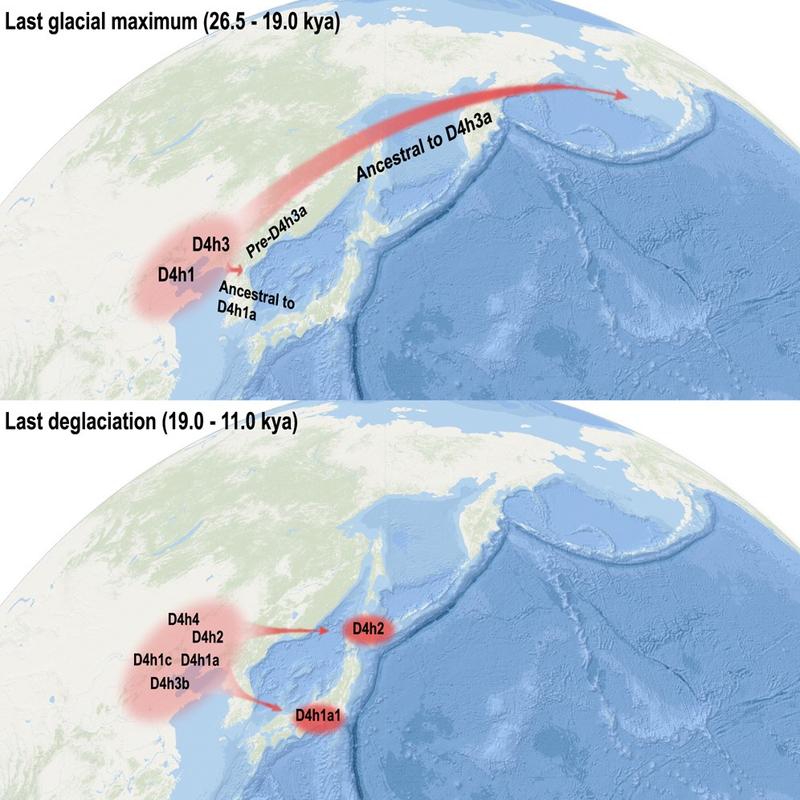 Graphical abstract showing ice age migration routes from northern coastal China to the Americas and Japan. (PHOTO TAKEN FROM CELL REPORTS WEBSITE)
Graphical abstract showing ice age migration routes from northern coastal China to the Americas and Japan. (PHOTO TAKEN FROM CELL REPORTS WEBSITE)
BEIJING – Chinese scientists and their international counterparts have recently discovered evidence of Ice Age human migrations from northern coastal China to the Americas and Japan by tracing contemporary and ancient human DNA.
It is widely recognized that the ancestors of Native Americans primarily came from Siberia. But recent genetic, geological and archaeological evidence shows that there were many waves of human migrations to the Americas from different parts of Eurasia.
The study showed that northern coastal populations in ancient China contributed to the gene pool of Native Americans, in addition to the ancestral sources from Siberia, Australia-Melanesia, and Southeast Asia
Researchers from the Kunming Institute of Zoology under the Chinese Academy of Sciences and other institutions in China, as well as from Italy, collected more than 100,000 contemporary and 15,000 ancient DNA samples from Eurasia, and identified 216 contemporary and 39 ancient samples which belong to an ancestral lineage that exists in mitochondrial DNA and can be used to track kinship through female lineage.
ALSO READ: DNA study reveals pattern of migration to Southeast Asia
The researchers discovered two migration waves from northern coastal China to the Americas. The first was during the Ice Age between 26,000 years ago and 19,500 years ago, and the second during the subsequent melting period between 19,000 years ago and 11,500 years ago.
They also found that at the time of the second wave, a group of ancient people sharing the same ancestral lineage migrated to Japan.
According to Li Yuchun, the lead researcher at the Kunming Institute of Zoology, the study showed that northern coastal populations in ancient China contributed to the gene pool of Native Americans, in addition to the ancestral sources from Siberia, Australia-Melanesia, and Southeast Asia.
READ MORE: Study explains how life survived on 'Snowball Earth'
The study also showed that this ancestral source contributed to the Japanese gene pool, especially the indigenous Ainu people. It helps to explain archaeological similarities between the Paleolithic inhabitants of China, Japan and the Americas.
The study was published in the journal Cell Reports.


